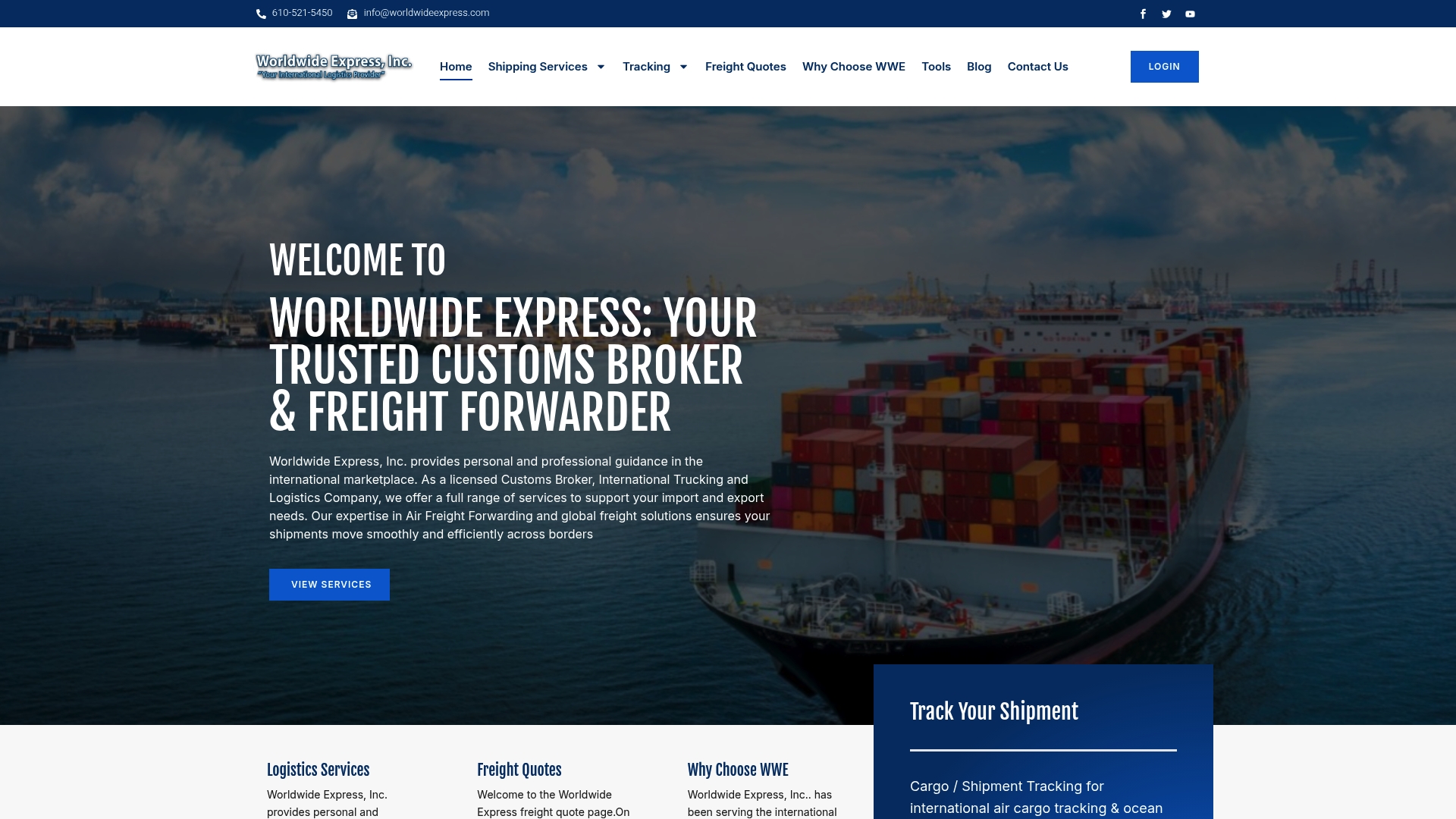Did you know that shipping costs can fluctuate by over 60 percent based on just a few key decisions? Understanding how factors like shipment size, freight class, and transportation mode affect your expenses can make a real difference for your business. Paying attention to these details helps you cut unnecessary costs, avoid billing surprises, and confidently plan your logistics strategy.
Quick Summary
| Takeaway | Explanation |
|---|---|
| 1. Shipment size and weight influence costs | Every pound and cubic inch affects pricing, impacting overall shipping expenses significantly. |
| 2. Accurate freight classification is essential | Properly categorizing freight can prevent unexpected charges and save money on transportation. |
| 3. Choose transportation mode wisely | Selecting the right shipping method balances cost, speed, and cargo safety based on specific needs. |
| 4. Effective route planning saves money | Analyzing shipping zones and optimizing routes can lead to significant cost reductions during transportation. |
| 5. Understand insurance options thoroughly | Evaluate risk factors and compare policies to protect your investment during shipping and strengthen accountability. |
Table of Contents
- Shipment Size And Weight Impact On Pricing
- Freight Class And Cargo Type Considerations
- Chosen Transportation Mode: Air, Ocean, Or Ground
- Distance And Route Complexity In International Shipping
- Role Of Customs Clearance And Documentation
- Surcharges, Accessorials, And Hidden Fees Explained
- Choosing The Right Freight Insurance Coverage
1. Shipment Size and Weight Impact on Pricing
When it comes to freight shipping, size and weight are not just measurements they are the primary drivers of your shipping costs. Every pound and cubic inch matters in determining how much you will pay for transportation.
Shipment dimensions directly influence pricing because larger and heavier cargo requires more resources. According to research from understanding shipping insights, transportation costs escalate quickly as shipment volume increases. Freight carriers calculate rates based on two critical factors: actual weight and dimensional weight.
Dimensional weight pricing means carriers charge based on the space your shipment occupies, not just its physical weight. This approach ensures that lightweight but bulky items pay their fair share of transportation expenses. For instance, a large box of pillows might weigh little but consume significant truck or container space.
To optimize your shipping expenses, consider these strategic approaches:
- Consolidate smaller shipments into larger, more efficient loads
- Use compact and lightweight packaging materials
- Design packaging that minimizes unused space
- Consider freight consolidation services for more economical shipping
Practical tip: Measure and weigh your shipments accurately before requesting quotes. Even small reductions in package size can translate into meaningful cost savings. Precision matters when managing shipping expenses.
By understanding how size and weight impact pricing, you can make informed decisions that reduce your overall transportation costs and improve shipping efficiency.
2. Freight Class and Cargo Type Considerations
Freight classification is far more than a bureaucratic label it is the financial blueprint that determines your shipping expenses. Understanding cargo categories can make the difference between budget friendly and budget breaking transportation costs.
The National Motor Freight Classification (NMFC) system evaluates shipments based on four critical characteristics: density, handling, stowability, and liability. These factors create a comprehensive profile that carriers use to calculate pricing. According to freight terms definitions, each item receives a specific class number ranging from 50 to 500, with lower numbers indicating more economical shipping rates.
Density plays a particularly crucial role in modern freight classification. Compact heavy items typically receive more favorable rates compared to large lightweight shipments that occupy significant space. Recent NMFC changes in 2025 have shifted towards an even more granular density based system, which means more precise and potentially more strategic pricing for shippers.
To navigate freight classifications effectively, consider these strategic approaches:
- Accurately measure and weigh your cargo
- Understand the specific NMFC code for your items
- Package items efficiently to minimize dimensional weight
- Consult with shipping professionals for complex cargo
Practical tip: Misclassification can lead to unexpected billing adjustments. Precision matters. Taking time to correctly categorize your freight can save significant money and prevent potential shipping disputes.
By mastering freight class nuances, you transform shipping from a complex puzzle into a manageable and potentially cost effective business operation.
3. Chosen Transportation Mode: Air, Ocean, or Ground
Your choice of transportation mode is the strategic decision that can make or break your shipping budget and delivery timeline. Each transportation method carries unique advantages and challenges that directly impact your logistics strategy.
According to the Air Freight vs Sea Freight guide, transportation modes vary dramatically in cost and speed. Air freight emerges as the fastest option but comes with a premium price tag being 4 to 6 times more expensive than ocean shipping. Ocean freight offers a budget friendly alternative for bulk shipments but requires significantly more time to reach its destination.
Ground transportation presents its own nuanced landscape. Trucking rates fluctuate based on load type full truckload (FTL) or less than truckload (LTL) and specific regional capacity. Selecting the right mode requires careful evaluation of your specific shipping needs.
To choose the most effective transportation mode, consider these strategic factors:
- Evaluate cargo urgency and delivery timelines
- Assess the value and fragility of your goods
- Compare transportation costs across different modes
- Consider destination and available shipping routes
Pro tip: Perishable items might demand air freight for quick delivery, while heavy industrial equipment could benefit from ocean or ground transportation. Your cargo type and destination are key decision drivers.
By understanding the strengths and limitations of each transportation mode, you can craft a shipping strategy that balances speed efficiency and cost effectiveness.
4. Distance and Route Complexity in International Shipping
International shipping is more than just moving cargo from point A to point B it is a complex strategic puzzle where distance and route intricacies dramatically impact your bottom line. Shipping routes are not created equal.
According to the international freight shipping guide, freight costs escalate exponentially with increased transportation distance. Within the United States regional shipping zones demonstrate significant pricing variations for example shipping from New York to California costs substantially more than delivering to neighboring states. International routes introduce an additional layer of complexity with challenges like port congestion and fluctuating container rates.
Route optimization becomes critical in managing shipping expenses. Longer distances increase not just fuel costs but also labor expenses and potential multi mode transportation requirements. Smart shippers understand that strategic route planning can significantly reduce overall transportation expenditures.
To navigate route complexity effectively, consider these strategic approaches:
- Analyze shipping zones and regional pricing
- Explore intermodal shipping options
- Consider regional sourcing to minimize transportation distance
- Understand container rate variations across different routes
Pro tip: Intermodal shipping blends cost efficiency with expanded reach. By combining multiple transportation modes like truck and rail you can create more economical shipping strategies that reduce overall expenses.
Mastering route complexity transforms international shipping from a challenging obstacle into a strategic advantage for your business.
5. Role of Customs Clearance and Documentation
Customs clearance is the critical gateway that can either smoothly expedite your international shipment or create a logistical nightmare. Proper documentation is not just paperwork it is the passport for your goods across international borders.
According to the understanding customs clearance guide, international freight involves multiple complex fees beyond basic transportation costs. Origin and terminal handling charges brokerage fees and duty assessments can significantly inflate your shipping expenses. These additional costs are often overlooked by inexperienced shippers who focus solely on base transportation rates.
Documentation accuracy determines the speed and efficiency of your international shipments. Incomplete or incorrect paperwork can trigger customs delays inspections and potential financial penalties. Each country maintains unique import requirements which means what works for one destination might create complications in another.
To navigate customs clearance effectively, consider these strategic approaches:
- Verify all documentation before shipping
- Understand specific import requirements for destination countries
- Work with experienced customs brokers
- Maintain detailed and accurate commercial invoices
- Prepare comprehensive cargo descriptions
Pro tip: For time sensitive or perishable shipments extra attention to documentation can mean the difference between a successful delivery and a costly logistical failure. Investing time in understanding customs requirements pays significant dividends in smoother international trade operations.
Mastering customs clearance transforms international shipping from a potential administrative minefield into a streamlined global business process.
6. Surcharges, Accessorials, and Hidden Fees Explained
Freight quotes can look deceptively simple until those sneaky additional charges start multiplying. The true cost of shipping goes far beyond the initial base rate carriers quote you.
According to shipping industry research, accessorial services can dramatically inflate your total transportation expenses. These additional charges cover specialized delivery requirements that extend well beyond standard transportation. Fuel surcharges represent a particularly dynamic cost driver that fluctuates weekly based on market conditions and carrier capacity.
Typical accessorial services that can unexpectedly increase your shipping costs include specialized delivery options like residential drop offs liftgate services inside delivery appointments and storage fees. U.S. carriers are particularly known for their complex fee structures that can catch unsuspecting shippers off guard.
To manage these potential hidden expenses effectively, consider these strategic approaches:
- Request comprehensive quotes that detail all potential charges
- Understand specific accessorial services you might require
- Negotiate rates for frequently used additional services
- Compare total costs across multiple carriers
- Ask carriers to explain each surcharge transparently
Pro tip: Some accessorial fees can be negotiated or avoided with proper planning. For instance choosing a delivery location with easy truck access can eliminate liftgate or inside delivery charges. Always ask carriers to break down their quote into specific line items to understand exactly what you are paying for.
By becoming a savvy shipper who understands the nuanced world of surcharges and accessorials you can transform unexpected fees from budget busters into manageable expenses.
7. Choosing the Right Freight Insurance Coverage
Shipping without proper insurance is like traveling without a safety net. Freight insurance protects your financial investment when the unexpected occurs during transportation.
According to the freight insurance guide, insurance premiums are significantly influenced by shipping destinations risk factors and potential damage scenarios. High risk areas or routes prone to weather disruptions can dramatically increase your insurance costs. International shipments particularly require careful consideration of comprehensive coverage.
Risk assessment becomes critical when selecting insurance. Not all coverage is created equal different policies protect against varying levels of potential loss. Some basic policies might only cover catastrophic events while more comprehensive options provide protection against damage theft and even partial loss.
To select the right freight insurance coverage, consider these strategic approaches:
- Evaluate your cargo’s total value
- Understand specific transportation risks for your route
- Compare different insurance policy types
- Consider the potential financial impact of cargo loss
- Review exclusions in insurance policies carefully
Pro tip: International shipments often require more robust insurance due to complex handling and longer transportation times. For high value or fragile cargo invest in all risk policies that provide the most comprehensive protection.
Choosing the right freight insurance transforms potential financial vulnerability into a calculated and manageable business strategy.
Below is a comprehensive table summarizing the key strategies and considerations for managing freight shipping costs and logistics efficiently discussed throughout the article.
| Aspect | Key Considerations | Strategies |
|---|---|---|
| Shipment Size & Weight | Size and weight significantly impact shipping costs. Dimensional weight pricing charges based on occupied space. | Consolidate shipments, use compact packaging, minimize unused space. |
| Freight Classification | NMFC system uses density, handling, stowability, liability. Items are classified from 50 to 500, affecting rates. | Accurately weigh cargo, use efficient packaging, understand NMFC codes. |
| Transportation Mode | Air is fastest but costly. Ocean is budget-friendly for bulk; ground depends on FTL/LTL. | Evaluate urgency and costs, consider cargo fragility, assess delivery timelines. |
| Distance & Route Complexity | Costs increase with longer distances and complex routes. Regional and international shipping have specific challenges. | Analyze zones and pricing, explore intermodal options, plan strategic routes. |
| Customs Clearance & Documentation | Proper documentation ensures smooth customs clearance and prevents delays or penalties. | Verify documents, understand import requirements, work with customs brokers. |
| Surcharges & Accessorial Fees | Additional fees for specialized delivery extend beyond base rates; fuel surcharges fluctuate. | Request detailed quotes, negotiate frequently used services, understand charges. |
| Freight Insurance | Protects against loss and damage. Insurance depends on cargo value, risk factors, and route conditions. | Evaluate cargo value and risks, compare policy types, consider potential financial impact. |
Transform Freight Quote Challenges into Clear Solutions
Struggling to make sense of shipping rates, hidden fees, or customs hurdles? As highlighted in our guide on the 7 key freight quote factors, details such as dimensional weight, cargo class, customs documentation, and unexpected accessorial charges can quickly turn cost predictions into surprises. These challenges hurt your bottom line and disrupt your plans.
Take the guesswork out of international shipping. At Worldwide Express, Inc., our specialists handle complex logistics like freight class assessment, customs brokerage, precise documentation, and robust cargo insurance every day. When you need support navigating global routes or controlling costs through expert guidance, our experience keeps your shipments compliant and your budget on track. Want to see how we make shipping simpler across every step? Visit our Uncategorized – Worldwide Express, Inc. category for shipping strategies and insights tailored for your business.

Ready to avoid costly mistakes and get transparent freight quotes you can rely on? Connect with Worldwide Express, Inc. today. Discover real solutions that deliver value now and ensure your next shipment moves with confidence. Start optimizing your supply chain with us.
Frequently Asked Questions
How do size and weight impact my freight quote?
Size and weight are the primary drivers of your freight quote. To get accurate shipping costs, measure and weigh your cargo precisely, as even small changes can lead to significant savings.
What is freight classification and why is it important for my quote?
Freight classification categorizes your shipment based on characteristics like density and handling, directly affecting your shipping costs. Identify the NMFC code for your cargo and ensure accurate measurement to prevent misclassification fees.
How can I choose the most cost-effective transportation mode for shipping?
Evaluate the urgency, fragility, and nature of your goods to select the best transportation mode. Compare costs and delivery timelines for air, ocean, and ground options to make informed decisions that balance both speed and budget.
What role does customs clearance play in determining my shipping costs?
Customs clearance is crucial for international shipping and involves fees that can increase overall transportation costs. Double-check all required documentation before shipment to avoid delays and unexpected charges.
What potential hidden fees should I look for in my freight quote?
Hidden fees can include fuel surcharges, accessorial charges, and other additional costs that aren’t included in the base rate. Request detailed quotes from carriers that break down all potential charges to budget effectively and avoid surprises.
How can freight insurance influence my overall shipping costs?
Freight insurance protects against potential loss and is affected by your cargo’s value and transportation risks. Assess the total value of your cargo and evaluate different insurance options to select robust coverage that minimizes financial vulnerability.
Recommended
- Understanding Freight Rate Negotiation: Key Concepts Explained – Worldwide Express, Inc.
- What is a Freight Quote? Understanding Its Importance – Worldwide Express, Inc.
- 8 Key Freight Terms Definitions Every Importer Should Know – Worldwide Express, Inc.
- Understanding Container Shipping Rates for Global Trade – Worldwide Express, Inc.






